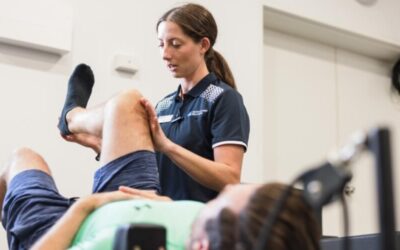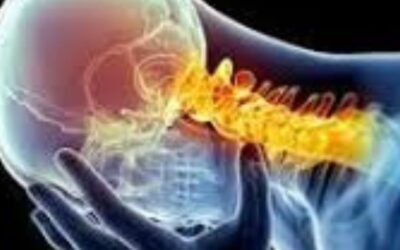From childhood netball players to the chronically uncoordinated, we’ve all likely encountered a lateral ankle ligament sprain at some point in our lives. Frequently referred to as “rolling, twisting or spraining”, it’s generally a much nicer diagnosis than a fracture, but that doesn’t mean it doesn’t come with pain and the need for recovery. In this blog, we’re going to take you through the injury, what it means for you, and how you can manage it.
What is a Lateral Ankle Ligament Sprain?
A lateral ankle ligament sprain is perhaps the most common ankle injury seen by physiotherapists, with it accounting for approximately 85% of all ankle sprains. It often occurs during sporting activities but can easily happen during day-to-day activities by missing a step or tripping on uneven ground. While common, it can still be awfully painful, depending on the degree of the injury.
Causes of Lateral Ankle Ligament Sprain
True to its name, the lateral ankle ligament sprain typically occurs when the sole of your foot rolls under, injuring the lateral ligaments of the ankle. It’s an inversion injury, meaning it is caused by the foot turning inward, and usually occurs during a shift of body weight onto the weight-bearing foot. Of the three ligaments that make up the lateral complex, the most frequently injured is the anterior talofibular ligament (ATFL), but injuries can occur to the calcaneofibular (CFL) and posterior talofibular (PTFL) ligaments as well.
Common scenarios where this will occur include:
- A fall where your ankle gets caught;
- Awkward landings, commonly on one foot;
- Walking or running on an uneven surface.
Some risk factors can make you more susceptible to a lateral ankle ligament sprain:
- Participation in sports involving a frequent change of direction;
- Previous injuries;
- Poor shoe choice;
- Walking, running or playing on uneven surfaces.
Signs and Symptoms:
A lateral ankle ligament sprain will need to be confirmed by a healthcare professional, typically using an X-Ray, so that the extent of damage to the ligaments can be assessed to identify whether you have a sprain or fracture. If you’ve tripped and successfully sprained your ankle, you’ll likely notice:
- Pain on the outside of your ankle;
- Swelling;
- Tenderness;
- Bruising;
- Instability in your ankle;
- Stiffness of your ankle;
- Inability to bear weight.
Lateral Ankle Ligament Sprain Treatment:
A lateral ankle ligament sprain injury can be treated in a variety of ways depending on the severity of the injury. Typically, these are minor injuries that will respond well initially to P.R.I.C.E (Protection, Rest, Ice, Compression, and Elevation), in combination with supportive stability provided by taping and crutches.
However, without proper treatment and rehabilitation, a more severe sprain can weaken the ankle and increase the chance of a recurrence. It’s important to get advice and education from a physiotherapist regarding gradual weight-bearing and a progressive exercise program to ensure full recovery and minimise the risk of re-aggravation.
Prognosis:
Depending on the severity of your sprain, it can typically put you on the sidelines for anywhere between 2 to 4 weeks. More severe injuries could potentially take up to 12 weeks to make a full recovery. It’s important that you follow your physiotherapist’s advice for the quickest recovery.
How to Prevent a Lateral Ankle Ligament Sprain:
Prevention is always better than a cure, so we have listed our top tips to help prevent a lateral ankle sprain injury:
- Support your ankle with taping or an ankle brace when participating in high-risk activities;
- Reduce the amount of time you spend in high-heels;
- Make sure your shoes are well-fitting
- and supportive;
- Warm-up before participating in sports.
- Be cautious when walking on uneven surfaces.
The Top 5 Benefits of Joining an Exercise Class
In today's busy world, finding time to stay fit and active can be a challenge — especially when work demands, family commitments, and various other responsibilities seem to vie for our attention. However, one excellent way to prioritise your health and fitness goals...
Physiotherapy: What It Is and How It Can Help
Physiotherapy, often simply referred to as physio, is a branch of healthcare that plays a pivotal role in restoring and maintaining movement and physical function. It's a profession that goes beyond the conventional understanding of healthcare, focusing on empowering...
What are Cervicogenic Headaches?
A cervicogenic headache is a pain that develops in the neck, though a person feels the pain in their head. Cervicogenic headaches are secondary headaches. Secondary headaches are those caused by an underlying condition, such as neck injuries, infections, or severe...



